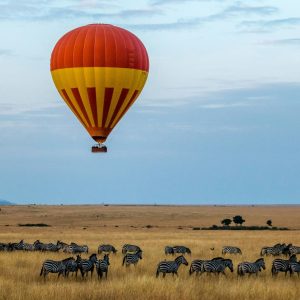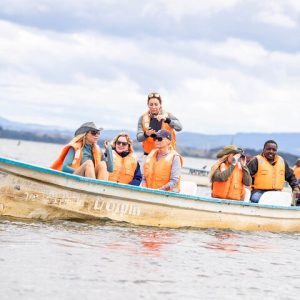Samburu National Reserve
Samburu National Reserve is a renowned wildlife haven in the northern part of Kenya, known for its unique landscapes, diverse wildlife, and cultural experiences. Covering an area of about 165 square kilometers (64 square miles), it is situated on the banks of the Ewaso Ng’iro River, which serves as a lifeline for the region, attracting a variety of animals and birds.
Landscape and Scenery
The reserve boasts a rugged, semi-arid terrain characterized by open savannahs, acacia woodlands, rocky outcrops, and doum palm groves. The Ewaso Ng’iro River, which meanders through the reserve, is surrounded by lush vegetation, providing a stark contrast to the otherwise dry and dusty landscape. The combination of riverine forests, open plains, and dramatic hills like the Koitogor and Ololokwe makes Samburu National Reserve incredibly scenic.
Wildlife
Samburu is famous for its unique “Samburu Special Five” – five rare and endemic species found in the region: the Grevy’s zebra, reticulated giraffe, Somali ostrich, gerenuk (also known as the giraffe gazelle), and Beisa oryx. The reserve is also home to large populations of elephants, lions, leopards, cheetahs, buffalos, and African wild dogs. Additionally, the reserve’s river attracts hippos and Nile crocodiles, while its birdlife is spectacular, with over 450 recorded species, including the vulturine guineafowl, martial eagle, and pygmy falcon.
Culture and People
The Samburu people, a semi-nomadic pastoralist community, inhabit the region surrounding the reserve. Known for their colorful dress, traditional customs, and rich cultural heritage, they offer visitors a chance to experience their way of life through guided cultural tours, traditional dance performances, and visits to their villages (manyattas).
Conservation and Management
Samburu National Reserve is managed by the Samburu County Government in partnership with local communities. The reserve is committed to sustainable tourism and conservation efforts, working to protect its unique wildlife and habitats while supporting community development.
Accessibility
Samburu National Reserve is accessible by road from Nairobi, which is approximately 350 kilometers (217 miles) away, a journey that takes about 5-6 hours. The reserve also has a couple of airstrips, such as Samburu and Buffalo Springs, that accommodate charter flights from Nairobi or other parts of Kenya
Best Time to Visit
The best time to visit Samburu National Reserve is during the dry seasons (June to October and December to March), when wildlife is more concentrated around water sources and is easier to spot. However, the reserve is open year-round and offers unique experiences in every season.
Samburu National Reserve offers a distinct and less-crowded safari experience compared to some of Kenya’s more famous parks. Its unique wildlife, breathtaking scenery, cultural richness, and commitment to conservation make it a must-visit destination for nature lovers and adventurers.
Other Attraction Sites

Masai Mara
Best known for yearly Wildebeest migration, big cats and lots of wildlife

Amboseli
Known for peak views of Mt. Kilimanjaro and large herds of elephants

Tsavo East
Largest park with red-soiled elephant herds and maneless lions

Lake Naivasha
Fresh water lake in Rift Valley best for boat ride and guided walking tour

Ol Pejeta
The only place in Kenya for you to see Chimpanzee in the Sweetwater Chimpanzee Sanctuary